Foreign policy and foreign affairs of India have been challenged and transformed since independence by a changing geopolitical environment. Relationships with the United States, Russia and China play a significant role in shaping India’s external affairs. With its complex rivalry with China, how does India balance its strategic partnership with the US?
By Arun Bhatnagar
- The Pentagon’s latest report on China’s military capacity has warned that Beijing could field a stockpile of around 1500 warheads by 2035
- With Russia’s perceived decline, New Delhi has kept alive the hope that the US will be a primary source of high-technology
- According to declassified documents, President JR Jayawardene had told Peter Galbraith, that Sri Lanka was forced into making a deal with India
- Indira Gandhi declared Dacca the capital of a free nation after Pakistan’s military surrender in East Bengal, elevating India’s global stature
PANDIT JAWAHARLAL NEHRU took office as the Member for External Affairs and Commonwealth Relations in the Executive Council of the Viceroy, Lord Wavell, in early September, 1946. The Viceroy appointed him to be Vice President of the newly-constituted Council in order that he could ‘act when I was absent’ and he designated it an ‘Interim Government’.
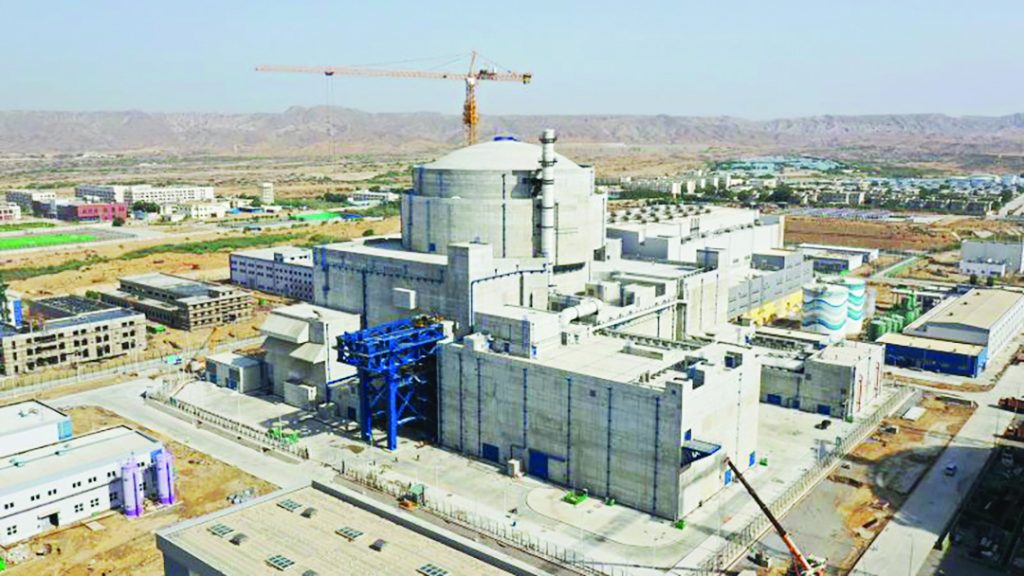
A collaboration worth about US$ 4.8 billion has been concluded between China and cash-strapped Pakistan to set up a 1200 MW nuclear power plant in the Mianwali district (Pakistan Punjab), with PM Shehbaz Sharif highlighting that the project ‘sends the message that Pakistan is a place where Chinese firms and investors continue to show their trust’
Towards the end of October, 1946, Nawabzada Liaquat Ali Khan (1895-1951) was sworn in as the Finance Member and four more of Jinnah’s nominees joined the Interim Government. A few days later, Nehru could not keep an appointment with Wavell. He wrote that he had been under mental strain which had been compounded by the difficulty he felt in dealings with ‘our new colleagues’ and informed the Viceroy that he might decide to resign. But he carried on.
ORIGINS OF INDIA’S FOREIGN POLICY
The portfolio of External Affairs and Commonwealth Relations can trace its origins to the Indian Political Department (IPD), earlier known as the Foreign and Political Department, in British India. A distinction was made between the ‘foreign’ and ‘political’ functions of the Department, in as much as relations with Asian entities, such as the Gulf Arab States, Aden (now South Yemen) and Somaliland Protectorates, as also the Indian Princely States, were treated as ‘political’ and those with European powers as ‘foreign’.
The senior personnel employed by the IPD – known as the Indian Political Service (IPS) – were referred to as ‘political officers’ and were mainly recruited from the British Indian Army and the Indian Civil Service (ICS).
Members of the IPS were seconded from their original service and were subject to its pension and retirement rules. The IPS recruited two ICS officers every year (this was reduced in due course) and four or five Army officers normally joined in alternate years.
The composition of the Political Service was predominantly European, with only a small component of Indians. In 1947, its strength of 170 officers included 17 Indians of whom 12 were Muslim e.g. Maj Gen Iskander Mirza (later Governor General and President of Pakistan) and KPS Menon Sr, ICS, who became the first Foreign Secretary under Prime Minister Nehru.
The last Indian to be inducted, as late as in 1946, was VMM Nair (ICS, Bihar, 1942) who was connected with KPS Menon Sr through relationships with Sir C. Sankaran Nair (1857-1934) and Sir C Madhavan Nair (1879-1970). At Independence, a handful of British officers like Sir Humphrey Trevelyan (1905-85), later Baron Trevelyan (he transferred from the ICS to the IPS in 1932) and Sir Edward Wakefield (1903-69), then a Joint Secretary, remained in India briefly, including in the Ministry of External Affairs and Commonwealth Relations.
HOW NEHRU SHAPED INDIA’S EXTERNAL AFFAIRS
By keeping the responsibility for foreign policy entirely with himself, Nehru added to his heavy burden as head of the Government of India. It was a disadvantage also for the Indian Foreign Service (IFS), then at a formative stage. Notwithstanding the availability of some very able men, such as Sir Girija Shankar Bajpai, Subimal Dutt, BN Chakravarty, YD Gundevia, Rajeshwar Dayal, BFHB Tyabji and Arthur Lall (all of the ICS), it was not, overall, a good Service, certainly not good enough for a country of India’s emerging importance. There was not enough training or professional capacity and too much eagerness to please the higher echelons, made the worse by an excessive habit of publicity and propaganda.
PM Nehru was far too busy to go into the details or to get to know the officers, except for those at the top and a few favourites. This, in turn, encouraged sycophancy, ad hoc approaches and subjectivity. Some of the Indian Missions abroad sent New Delhi the kind of reports which they thought would be congenial to their superiors in South Block. The situation was further complicated by the ambiguous position allowed to VK Krishna Menon who, in some respects, was virtually a second Foreign Minister for five years or so, prior to his exit in late 1962.
During the prime ministerships of Nehru and Indira Gandhi (and, to an extent, of Rajiv Gandhi), a few diplomats, both ICS (Indian Civil Service) and IFS, came to occupy appreciably more prominent positions than their other colleagues.
Ratan Kumar (RK) Nehru (ICS, CP & Berar, later Madhya Pradesh, 1925), the third and last-but-one Secretary General of the Ministry of External Affairs was of the extended Nehru clan and related to Jawaharlal; so also was Braj Kumar (BK) Nehru (ICS, Punjab, later UP, 1933) who, although not assigned to the Foreign Service, held crucial diplomatic posts and was envoy to the United States and, subsequently, to the United Kingdom. RK Nehru’s spirited wife, Rajan, was a daughter of Colonel Sir Kailas Narayan Haksar (1878-1953), a Minister in the then Princely States of Gwalior and Jammu & Kashmir.
Regarded as a particularly successful Ambassador to China, RK Nehru and his better half had relatively easy access to Prime Minister Zhou Enlai in Peking (Beijing). It was much later – when his Papers were studied – that RK’s work was objectively evaluated as a diplomat of rare intellectual integrity, courage and foresight. His views on the India-China question were at variance with the Prime Minister’s to whose romanticism he did not subscribe and whom he told – early in 1961 – that India was drifting towards a collision with China, without having made adequate preparations; it was, therefore, in New Delhi’s interest to ‘buy time’ and prevent a junction of forces against India between China and Pakistan.
There were others at the Foreign Office like TN (Tikki) Kaul (ICS, UP, 1936) and JK (Makki) Atal (ICS, CP & Berar, later Madhya Pradesh, 1936), a maternal grandson of Sir Tej Bahadur Sapru (1875-1949) and, for a while, Private Secretary to Maulana Azad, the Education Minister – who could claim a measure of access to the Prime Minister. Both were Kashmiri Pandits – the first born in Baramulla (J&K) and the second hailing from Jaipur (Rajputana).
Still others, such as the late Romesh Bhandari (IFS, 1950), K Natwar Singh (IFS, 1953) and Mani Shankar Aiyar (IFS, 1963) went on to pursue successful careers, professional and political, with the backing of the First Family.
DIPLOMATS’ ROLE IN NEHRU-GANDHI ERA
Jawaharlal Nehru had some of the best ICS officers in his Ministry (and in various Departments of the Government of India) at his disposal. One of his big failures, amazingly enough, was in the field of foreign affairs – the area of his prime expertise – because of his heavily flawed China policy. The prevailing thought-process at the time being ‘Panditji knows best’, very few of his close advisers questioned him.
In a well-received book, ‘Nehru: The Years of Power’ (1960), the American journalist, Vincent Sheean (1899-1975) pointed out that a technical error led to India’s appeal to the United Nations on Kashmir being considered a ‘dispute’ rather than an ‘act of aggression’ by Pakistan. The appeal should have been made under Chapter 7 of the UN Charter, not Chapter 6.
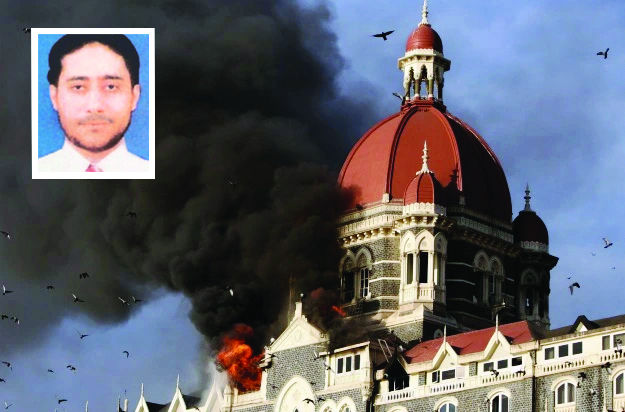
As early as in February 1959, TN Kaul, then the envoy at Teheran (now Tehran) was advising the new Congress President, Indira Gandhi, on a range of issues. Amongst other things, he wrote to her to say that “…… we must guard against certain national dangers like (i) the possible splitting up of India, (ii) domination by a military or other dictatorship and (iii) aligning India with one or the other power blocs in the world. For this purpose, only people with hundred per cent loyalty to India and India’s ideals should be appointed to key positions, where policy is formulated and executed, in the Congress Party and the Government. At present, enough consideration does not seem to be given to this matter, either in Government or in the Party.”
Overriding India’s anxieties, China formally blocked a proposal at the UN Security Council for designating Sajid Mir of the Lashkar-e-Taiba as a global terrorist. The move was timed with PM Modi’s first State visit to the US in June, 2023 and came hours before he landed in New York to lead the International Yoga Day function
The advice could be interpreted as a precursor to the objective of establishing a ‘committed and subservient bureaucracy’.
When Kaul was named the Indian Ambassador to the USA by Prime Minister Indira Gandhi in 1973, the then US Ambassador to India, Daniel Patrick Moynihan, wrote an unflattering assessment about him. In a cable sent on March 17, 1973, Moynihan said: ‘Kaul, like the Nehru family, is a Kashmiri Brahmin, self-assured to the point of arrogance by birth. His career, most notably as ambassador to Moscow and more recently as foreign secretary, has been marked by pro-Soviet bias … However, Kaul is also a sensitive weathervane of Indian foreign policy … he will seek to improve relations with the United States, if that is GOI policy, and will criticise our actions, if so instructed … I have not yet met him but all here agree he is inclined toward ‘slyness’, especially in his dealings with westerners. … As the British say, he is ‘too clever by half’, a characteristic which many western chiefs of mission in New Delhi have found distasteful and trying.’
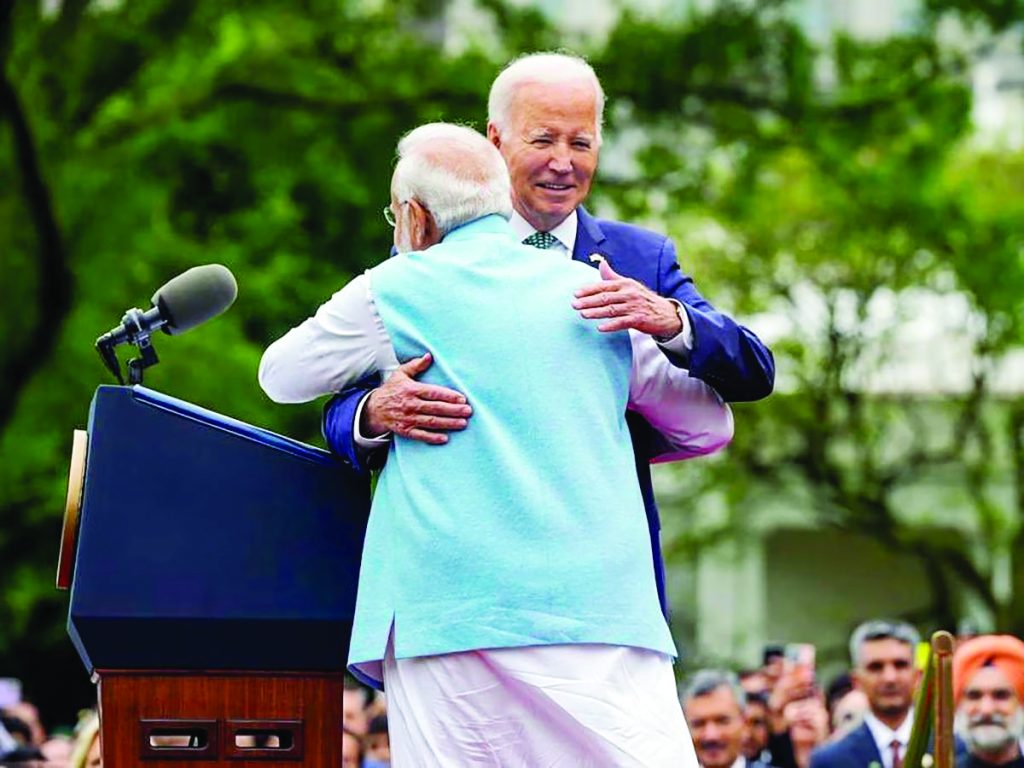
MK Rasgotra (IFS, 1949) who served as Foreign Secretary in the 1980s and, briefly, as India’s High Commissioner in London, was trusted by Indira Gandhi. According to Rasgotra, the then US President, John F Kennedy, had offered to help India detonate a nuclear device considerably before China did in 1964 and that Nehru refused the offer. If India had gone ahead in this field, the entire nature of the relationship with China would have acquired a different complexion and the military confrontation of 1962 might not have ensued.
In Washington DC, the American hosts indicated that PM Modi’s visit significantly deepened India–US relations and that, while the question of ‘human rights’ was a foundational pillar of American foreign policy, the emphasis had been on the wide-ranging nature of the bilateral ties and ‘deliverables’ in the spheres of defence, space, health, technology, cyber and people-to-people links
The Prime Minister also probably declined, in favour of Communist China, a proposal of the major powers for India’s permanent membership of the United Nations Security Council (UNSC).
ROLE IN THE LIBERATION OF BANGLADESH
Lal Bahadur Shastri (1904-66) was the first of Nehru’s successors to confront, through force of arms, the bitter legacy of Partition and the perennially hostile attitude of Pakistan when troops of the two countries clashed in the Rann of Kutch in May, 1965. Months later, a full-scale war, more or less, broke out.
A high point in India’s role on the world stage was reached when – after the surrender of the Pakistan military in East Bengal – Prime Minister Indira Gandhi, who played her hand brilliantly in the liberation of Bangladesh, announced: ‘Dacca is now the free capital of a free country’.
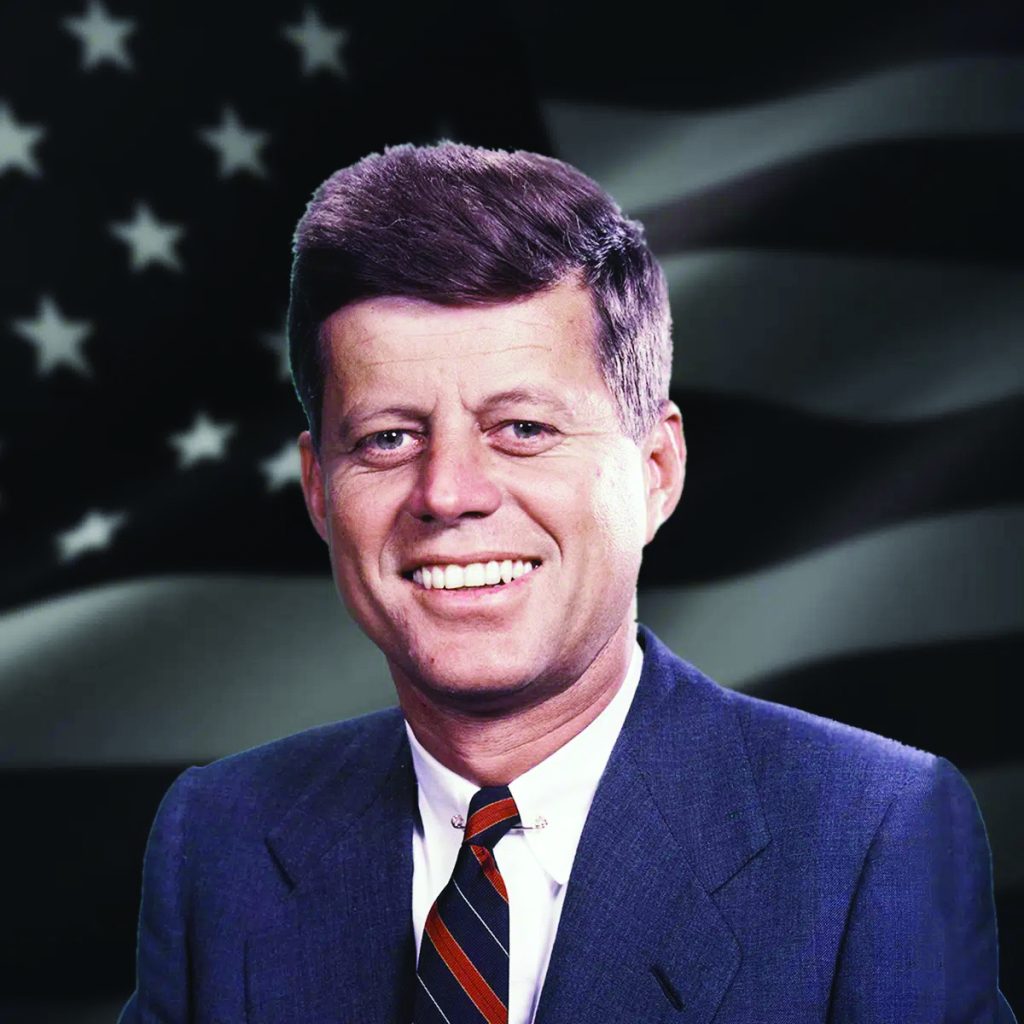
The Principal Secretary in the PMO at the time was PN (Babboo) Haksar, neither an ICS nor a direct recruit to the IFS, and a Kashmiri Pandit to boot who wielded tremendous influence in the functioning of the government. He played a vital role in negotiating the 1972 Simla Agreement with Pakistan and was probably the only one on the Indian side who was privy to the ‘secret discussions’ between Indira Gandhi and Zulfiqar Ali Bhutto on the Kashmir issue.
The then US President, John F Kennedy, had offered to help India detonate a nuclear device considerably before China did in 1964 and Nehru refused the offer. If India had gone ahead in this field, the entire nature of the relationship with China would have acquired a different complexion and the military confrontation of 1962 might not have ensued
One of the actions for which Haksar came in for criticism related to the advice he apparently proffered to Indira Gandhi not to insist on the Cease Fire Line being recognized as the International Boundary between India and Pakistan.
INDIA’S INVOLVEMENT IN SRI LANKA
Rajiv Gandhi (1944-1991), PV Narasimha Rao (1921-2004) and Atal Bihar Vajpayee (1924-2018), among others, followed Indira Gandhi as Prime Ministers of India.
Before Rajiv Gandhi lost power in 1989, his government had, two years earlier, signalled a change in the Sri Lanka policy. There had been a history of discrimination against the Tamils in that country and a Simhala – only policy had been introduced way back in 1956. The non-Simhalese speaking people found themselves second-class citizens. When a Tamil party, fighting on the plank of, did well in the 1977 elections, the inter-community relations deteriorated further and anti-Tamil rioting broke out, the most serious in 1983. India now began arming the Tamil rebels – a decision motivated partly by a regional power’s desire to flex its muscles and partly as a response to the outrage expressed by South India’s own Tamil population. A thrust came under Rajiv Gandhi, when the Sri Lanka government blockaded Jaffna, India airdropped food supplies to the peninsula.
This had the effect of moderating President JR Jayawardene who agreed to guarantee a degree of devolution to the North and the East. An Accord was signed between India and Sri Lanka and New Delhi sent in the Indian Peace Keeping Force (IPKF) to enforce the same. The Liberation Tigers of Tamil Eelam (LTTE) resisted this action.
CONSEQUENCES AND TRAGIC OUTCOME
The operations failed and the IPKF returned to Indian shores. The problem, perhaps, lay in the nature of the Accord which could have had a better run had it been concluded between Colombo and the Tamil parties, with India guaranteeing its implementation. The consultations with the Tamil parties were done in haste and, in the end, the mediator became the key actor and the villain. The arch rivals, the Simhalese regime and the Tamils, stood united in their opposition to the IPKF.
The Sri Lanka enterprise cost Rajiv Gandhi his life. The LTTE were determined to prevent his second installation as Prime Minister and extracted revenge through a fatal bomb attack in May, 1991 when the electioneering for the mid-term polls in India was in full swing.
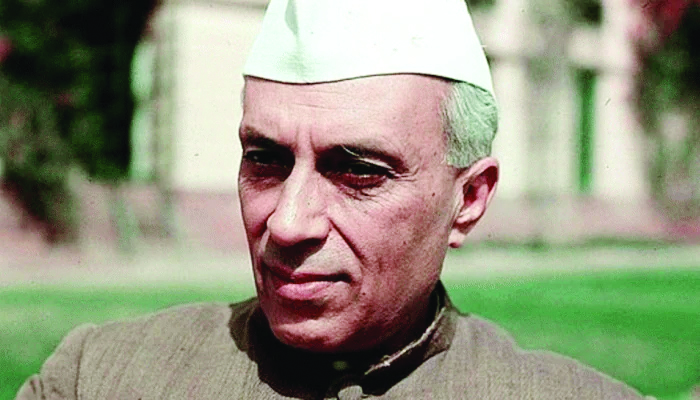
It is a moot point whether Rajiv Gandhi was guided, with requisite judiciousness and circumspection, not only by the generals and the intelligence agencies, but also by the key diplomats, including JN Dixit, the then High Commissioner in Colombo (a future Foreign Secretary and NSA) and his senior colleagues in the Indian High Commission, two of whom are currently Ministers in the Union Government. An ill-advised intervention should have been avoided; the ultimate consequences for India could hardly have been worse.
In a well-received book, ‘Nehru: The Years of Power’ (1960), the American journalist, Vincent Sheean (1899-1975) pointed out that a technical error led to India’s appeal to the United Nations on Kashmir being considered a ‘dispute’ rather than an ‘act of aggression’ by Pakistan. The appeal should have been made under Chapter 7 of the UN Charter, not Chapter 6
According to declassified documents, President JR Jayawardene had told a US diplomat, Peter Galbraith, that Sri Lanka was forced into making a deal with India as its own armed forces had refused to ‘take Jaffna’. In 1986, Jayawardene had a very negative view of India, given that New Delhi was reported to be training Tamil insurgents. He told a visiting US Senator, Charles Percy: “I am a peaceful man. But India’s role in this [ethnic] matter is reprehensible and the Indians have to be held responsible for their actions”.
VAJPAYEE’S FOREIGN POLICY: NUCLEAR TESTS, WAR, AND SHIFTING ALLIANCES
The first big event of Atal Bihari Vajpayee’s premiership was the detonation of five devices (Pokhran II) in May, 1998. The euphoria was short-lived since Pakistan carried out a test within a week of Pokhran-II. A controversy also erupted about the yield of the second fusion [H-bomb stage of the thermo-nuclear (TN) device] being not only far below the design prediction made by the Bhabha Atomic Research Centre (BARC) but that it had actually failed.
This contention of the then DRDO Project Director and other experts was discussed at a meeting convened by the then NSA (Brajesh Mishra, a retired IFS of 1951 vintage and of considerably less than perfect credentials) in late 1998. A Kankyakubja brahmin, like Vajkpayee, he was the PM’s blue-eyed boy and personal favourite.
Despite a protracted interaction between the DRDO and BARC, both stuck to their positions on the yield of the TN device. Thereafter, the NSA took a ‘voice vote’ which was most unusual (and inexcusable) in a matter that was technically so complex.
The issue seemed to be fading away when it resurfaced through the argument that the TN device had not been weaponized by BARC while the 25 kiloton fission device had been weaponized and operationally deployed on multiplate weapon platforms.
After the Kargil conflict (May-July, 1999), the next crisis was not long in coming. It arrived in the form of hijacking of IC814 which was on a flight from Kathmandu to Delhi in the last week of December, 1999. The episode became a classic example of ineptitude and mishandling on the part of Vajpayee’s senior-most advisers and the Crisis Management Group (CMG) headed by the then Cabinet Secretary. The only question on which the top brass had any clarity was that there should be no casualties among the passengers. In the event, the aircraft landed at, and was allowed to take off, without let or hindrance, from Amritsar, finally reaching Kandahar. The net result was that the hijackers agreed to free the hostages in lieu of the dreaded Maulana Masood Azhar, Mushtaq Ahmed Zangar and Ahmed Omar Sheikh who were lodged in the Srinagar jail. The ignominious exchange was effected in Kandahar in the presence of Jaswant Singh (1938-2020), Vajpayee’s Foreign Minister. From the Indian side, the present NSA, Ajit Doval, was a negotiator. Far from being held accountable, the Cabinet Secretary of the day, a UP civilian, was rewarded with the Jharkhand governorship.
At Karachi, in January 2000, after being released by the Indian authorities, Masood Azhar proclaimed: “Muslims should not rest in peace till we have destroyed India”. Years later, Shah Mahmood Qureshi, a former Foreign Minister of Pakistan, declared: ‘….. When it comes to the dispute over J&K, no decision on the subject can be India’s internal matter ……’.
A military standoff resulted between India and Pakistan following the attack on the Indian Parliament in December 2001. By January, 2002, India had mobilised three armoured divisions and around 500,000 troops along the border and the Line of Control (LOC) in J&K; Pakistan deployed some 300,000 troops in the region. Tensions ran very high before a de-escalation could be brought about.
Termed ‘Operation Parakram’, the long buildup was called a ‘most punishing mistake’ for the armed forces by a former Chief of Naval Staff; he said that there was no aim or military objective for the Operation. Vajpayee’s high point did come in the summer of 2003 when he, with considerable tact and guile, managed to wriggle out of mounting pressure from the United States to send Indian troops to Iraq. Even Advani was not entirely in the know when Vajpayee chose to exhibit his skills.
Vajpayee was the External Affairs Minister (EAM) (1977-79) in the Morarji Desai-led Janata Government and Inder Kumar (IK) Gujral held the same charge (1996-98), alongwith the prime ministership during 1997-98.
Vidya Charan (VC) Shukla (1929-2013) who had become known as the ‘Goebbels of the Emergency’ was the EAM in the short-lived Chandra Shekhar ministry in 1990-91. PV Narasimha Rao was a highly regarded EAM.
INDIA’S EVOLVING RELATIONSHIP WITH THE US
During the NDA’s years in power under PM Narendra Modi – especially after 2019 – a marked tilt has occurred on India’s part towards the United States. Given the asymmetry vis-à-vis China in the economic, military and technological domains, and the existence of a strong Sino-Pakistan axis, the Government of India may be finding themselves in a difficult situation.
With Russia’s perceived decline, New Delhi has kept alive the hope that the US will, some day, be a primary source of high-technology. The US, on its part, views India as the world’s most populous country and an Asian power that dominates critical Indian Ocean Sea lanes. The clinching factor is their common concern regarding China’s aggressive challenge to the existing geopolitical world order.
In the circumstances, while India should expect the United States to adopt a ‘transactional’ approach and strike deals that are favourable to its interests, New Delhi must, reciprocally, ensure advancing its own interests at every possible stage. Whether it is the HAL-GE collaboration for F-414 turbojet co-production, the supply of armed MQ-9B drones, cooperation in semiconductor manufacturing or joint space-exploration, the Indian experts (and diplomats) need to carefully examine the fine-print of every Contract and Agreement.
One of Nehru’s big failures was in the field of foreign affairs – the area of his prime expertise – because of his heavily flawed China policy. The prevailing thought-process at the time being ‘Panditji knows best’, very few of his close advisers questioned him
Dr Salvatore Babones, Associate Professor of Sociology at the University of Sydney believes (amid the debate on whether democratic practices in India have taken a backslide, post-2014) that the US administration is not as pro-India as one may imagine and that President Biden (or the Secretary of State) did not explicitly endorse Indian Democracy during the Modi visit in June, 2023.
CHINA’S NUCLEAR BUILDUP: A GROWING CHALLENGE
An assessment of the Stockholm International Peace Research Institute (SIPRI) revealed that China has 410 nuclear warheads (up from 350 in January, 2022) while Pakistan had 170 and India 164.
China has continued to expand its nuclear weapons arsenal, as has Pakistan, albeit slowly, even as India stays confident of its strategic deterrence capabilities with the induction of new-generation Agni ballistic missiles and nuclear-capable Rafale fighter jets.
The Pentagon’s latest report on China’s military capacity has warned that Beijing could field a stockpile of around 1500 warheads by 2035 by pursuing the acceleration in its nuclear programme. China considers the Dalai Lama a ‘sting’ in its ties with India, which causes pain to Beijing, as expressed by a senior Chinese official, after it became clear as to why Wang Yi, cancelled a visit to New Delhi in April, 2017 for the Russia-India-China (RIC) trilateral meeting. The official said that Beijing ‘did not expect the Modi government to give the Dalai Lama clearance to visit Arunachal Pradesh and to facilitate his visit, accompanied by an Indian Minister, adding that, for the Chinese people, he (Dalai Lama) is a bad guy and his visit has created mistrust’.
THE PRESSURE AND EXPECTATIONS
Frank (Fakhrul) Islam – born in Azamgarh (UP), India – is a US-based information technology entrepreneur, investor, philanthropist and writer, who was nominated to the Board of Trustees of the John F Kennedy Center for the Performing Arts in 2013 by the then President Barack Obama. He also works on several Advisory Councils.
Islam hosted a private dinner for Rahul Gandhi in June, 2023 in Washington DC at which – in response to a question relating to American policy makers who believe that the BJP government in New Delhi is good for US national security interests as a counterpoint to China – Gandhi reportedly replied: ‘I personally don’t think that the erosion of democracy is beneficial for the national security of the United States. It is a disaster for the national security of the United States …’.
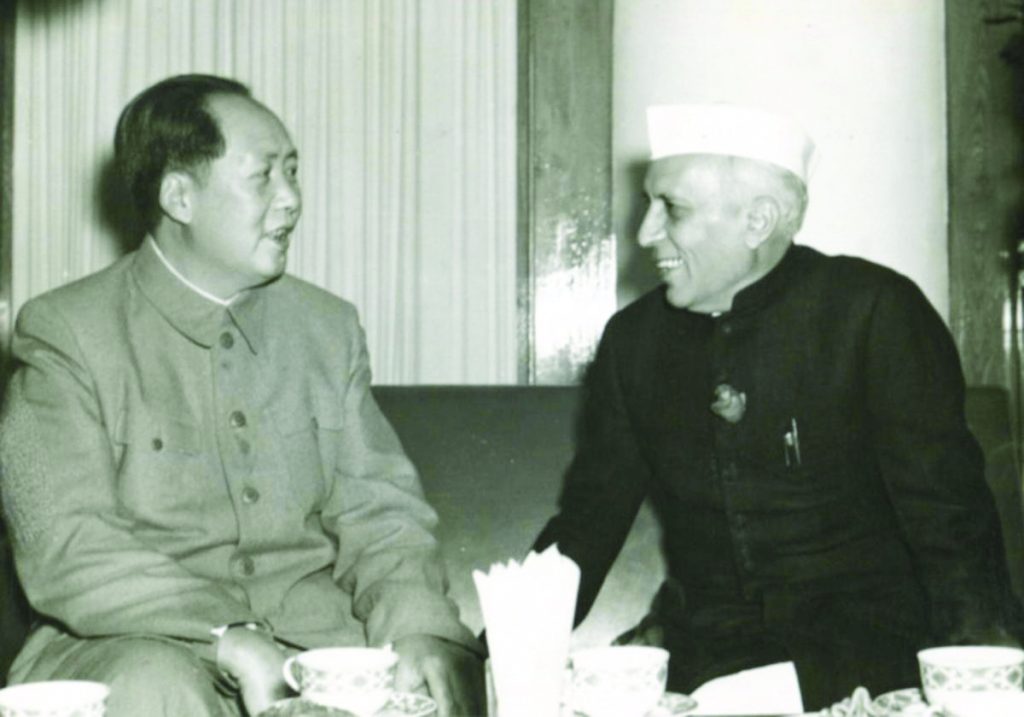
Senator Chris Van Hollen of Maryland attended the dinner where he warned against India deviating from the path of Mahatma Gandhi and Jawaharlal Nehru, saying: ‘As a US Senator, I am not taking the side of any candidate or party in India. But the US needs to be on the side of democracy, rule of law, religious freedom and freedom of press and expression’.
According to the White House, the Chinese air intercept over the South China Sea and maritime intercept across the Taiwan straits of American aircraft and vessels, are all part of the PLA’s ‘increasing level of aggressiveness’ and ‘it may not be long before someone gets hurt’.
While the public pronouncements may vary, neither Washington DC nor New Delhi want an Asia where Beijing calls the shots. What each actor would do in a crisis might not be the best yardstick to the bilateral relationship; however, the fact that both sides are constantly talking about the source of trouble and are trying to bridge the gap on how far they will cooperate in dealing with what is clearly an extremely serious challenge reflects a degree of progress in itself.
The US National Security Adviser (NSA), Jake Sullivan, and his Indian counterpart worked overtime to close the 100 percent transfer of technology agreement for manufacturing GE-414 jet engines in India, with Sullivan clearing resistance for the deal from the State Department.
The engines are to power the India-made Tejas Mark II fighters, which will form the backbone of the IAF in the current decade. Since some parts of the GE-414 engine are sourced from Europe, the United States is trying to get various partners on board for the engine to be built in collaboration with the Hindustan Aeronautics Ltd (HAL), Bengaluru.
Before reaching the US, Prime Minister Modi, in accepting the invitation to address the US Congress, tweeted: ‘We are proud of our Comprehensive Global Strategic Partnership… built upon the foundation of shared democratic values, strong people-to-people ties, and an unwavering commitment to global peace and prosperity’.
The State Department tried to iron out concerns over PM Modi having to face awkward questions over democracy in India, after an adverse Report on Religious Freedom was recently released.
A senior US spokesperson called India a ‘vibrant democracy’, adding that discussions on the ‘health of democratic institutions’ have taken place, as between ‘friends’. He said that Modi’s June visit was ‘really about advancing what is now, and what we hope will be, a deeper, stronger partnership and friendship going forward’, and that India ‘matters’ not just bilaterally to the US, but also multilaterally.
Simultaneously, plans had been afoot for PM Modi to ‘drop by’ in Cairo, on his way back from the United States.
His deliberations with the Egyptian President, Abdel Fattah El-Sisi, at New Delhi in January, 2023 were of positive content. Despite the fact that Egypt – a special invitee to the G20 under India’s presidency – was among those that did not participate in a G20 meeting in Srinagar, in May, 2023, India regards Egypt as an OIC country that hasn’t bought Pakistan’s propaganda on the Kashmir issue.
INDIA-US TIES: OPPORTUNITIES AND CHALLENGES AHEAD
In Washington DC, the American hosts indicated that PM Modi’s visit significantly deepened India – US relations and that, while the question of ‘human rights’ was a foundational pillar of American foreign policy, the emphasis had been on the wide-ranging nature of the bilateral ties and ‘deliverables’ in the spheres of defence, space, health, technology, cyber and people-to-people links.
In sum, it emerged that India needs to speedily build its capabilities and the United States can help with New Delhi’s important requirements.
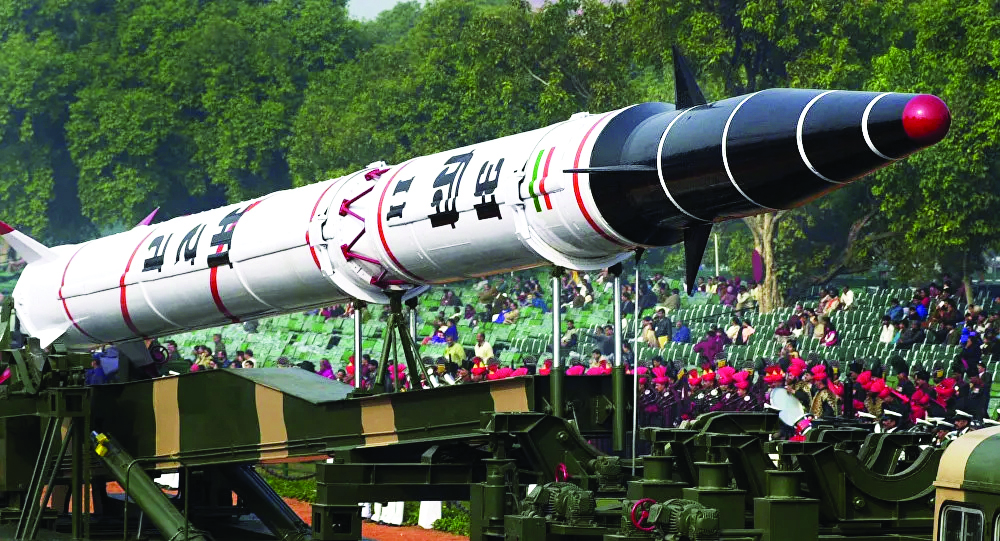
In his Keynote Address on June 20, 2023 to the inaugural INDUS-X conference organised by the US – India Business Council, in partnership with the US Department of Defense and India’s Department of Defence Production, the American Ambassador to India, Eric Garcetti, stated, ‘We’re just getting in the car together and we’re starting this voyage. It’s the elevation of something that has been growing’.
Earlier, in April, 2022, during the 2+2 dialogue that was attended by the Defence and Foreign ministers of the two countries in Washington DC, the US Secretary of State, Antony Blinken, had referred to the first-ever Summit level meeting (October, 1949), between an Indian Prime Minister and America’s Head of State. He said: “…. Soon after diplomatic relations were established, some 75 years ago, Prime Minister Nehru came to visit the United States. President Harry S Truman met him on the tarmac of the airport. And Prime Minister Nehru noted the importance of the moment, saying, and I quote: ‘I trust that these two republics of the Western world and the Eastern World will find `many ways of working together in friendly and fruitful cooperation to our mutual advantage, and for the good of humanity …’”.
Some 70 Democrats – Representatives and Senators – shot off a letter to President Joe Biden to raise concerns with Prime Minister Modi about human rights, press independence and religious freedoms in India. The lead author was Representative Ms Pramila Jayapal, Indian-American, long-time bête noire of Foreign Minister, S Jaishankar, and an influential figure.
The United States Commission on International Religious Freedom (USCIRF), an independent government body, urged President Biden to highlight the religious freedom concerns: ‘It is vital the US Government acknowledge the Indian Government’s perpetration and toleration of particularly severe violations of religious freedom against its own population and urge them to uphold their human rights obligations’, USCIRF Commissioner, David Curry, said in a statement.
Nadine Maenza, former chair of USCIRF, called on Biden to designate India as a ‘country of particular concern’, saying: ‘This is an opportunity for President Biden to show leadership by speaking directly to Prime Minister Modi about the seriousness of the situation’.
China has continued to expand its nuclear weapons arsenal, as has Pakistan, albeit slowly, even as India stays confident of its strategic deterrence capabilities with the induction of new-generation Agni ballistic missiles and nuclear-capable aircraft Rafale fighter jets
Even as a veteran politician, Bernie Sanders (born 1941), an Independent Senator close to the Democratic Party and one-time presidential hopeful, launched a tirade against religious discrimination in India, Barack Obama (born 1961), inter alia, observed – in an interview in June, 2023 – that ‘raising concerns about Indian democracy must enter into diplomatic conversations as well …’.
He added: ‘Part of my argument would be that if you do not protect the rights of ethnic minorities in India, then there is a strong possibility India at some point starts pulling apart. And we’ve seen what happens when you start getting those kinds of large internal conflicts …’.
THE FUTURE OF INDIAN FOREIGN POLICY
It was left to a relatively less experienced, albeit unfailingly subservient lieutenant – this time, Nirmala Sitharaman, Finance Minister, not to mention Rajnath Singh, Defence Minister – to hit back at Obama for raising ‘non-issues’ in respect of the treatment of minorities in India.
At a Press Conference, without naming Obama (who, it may be recalled, was the Chief Guest at New Delhi for the Republic Day in January, 2015, which was the BJP’s first year in power at the Centre), Sitharaman said that six Islamic nations, including Syria, Yemen and Iraq, had been bombed, saying: ‘We maintain restraint when another country is involved. We want friendship with the US but we get remarks about religious freedom…. It is during his tenure as President that the US bombed six Muslim countries and dropped more than 26,000 bombs …. How will people trust these allegations……’.
On June 22, 2023, the Editorial Board of the New York Times opined:
‘President Biden cannot ignore… the significant changes in India during the last nine years… India has witnessed a serious erosion of the civil and political rights… guaranteed by the Indian Constitution. Mr Modi and his allies have been accused of policies that target … religious minorities, especially India’s 200 million Muslims, and of using the power of the State to punish rivals and silence critics… the mainstream news media has been diminished… all to a chorus of avowals from the BJP that it is acting strictly within the law…. In January, 2023, the Modi government used emergency laws to limit access to a BBC documentary….As this Editorial Board had then warned, when populist leaders invoke emergency laws to block dissent, democracy is in peril….
CHINA’S ROLE AND TENSIONS IN THE INDO-PACIFIC
Overriding India’s anxieties, China formally blocked a proposal at the UN Security Council for designating Sajid Mir of the Lashkar-e-Taiba as a global terrorist. The move was timed with PM Modi’s first State visit to the US in June, 2023 and came hours before he landed in New York to lead the International Yoga Day function.
China’s action ended the India – US proposal of last year for a UN ban on Sajid Mir and belied hopes of China being more mindful of India’s terror concerns. One source said: ‘the timing to convert the technical hold into a formal block tells a story. Maybe it’s their (China’s) way of signalling how important they think they are at the UN’.
Beijing still had three more months to officially block the proposal.
A collaboration worth about US$ 4.8 billion has been concluded between China and cash-strapped Pakistan to set up a 1200 MW nuclear power plant in the Mianwali district (Pakistan Punjab), with PM Shehbaz Sharif highlighting that the project ‘sends the message that Pakistan is a place where Chinese firms and investors continue to show their trust’. He lauded Saudi Arabia, the UAE and Qatar for extending help to his country.
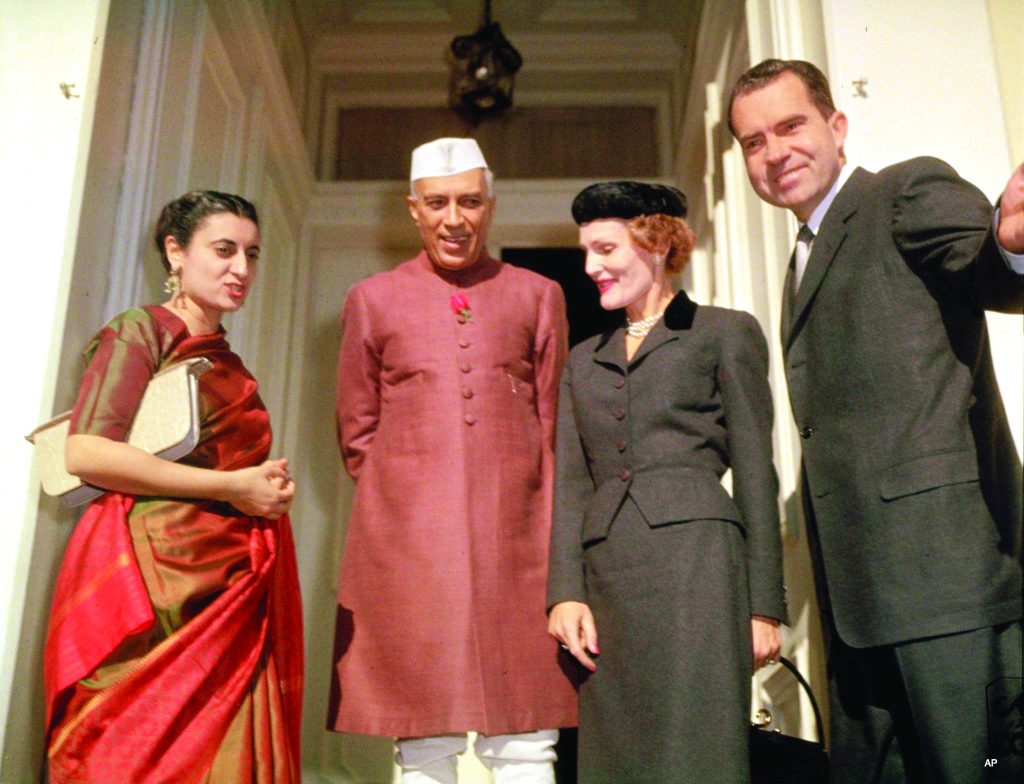
China is also accelerating its civil nuclear cooperation with Pakistan.
Almost immediately after Antony Blinken’s call on President Xi Jinping in Beijing in June, 2023 to smoothen over the rift from the spy balloon incident (and shortly before PM Modi arrived in the United States), President Biden commented: ‘…… Xi was frustrated by (our) efforts to bolster the Quad, an alignment of the US, Japan, Australia and India, seen as a counterpoint to Chinese influence in the Indo-Pacific Region ……. What he was really upset about was that I insisted that we reunite the Quad ….. He called me and told me not to do that because it was putting him in a bind …… I said all we’re doing …… we’re not trying to surround you, we’re just trying to make sure the international rules with air and sea lanes remain open …… So now, we have India, Australia, Japan and the US working hand-in-glove in the South China Sea and the Indian Ocean ……..’.
By keeping the responsibility for foreign policy entirely with himself, Nehru added to his heavy burden as head of the Government of India. It was a disadvantage also for the Indian Foreign Service (IFS), then at a formative stage. PM Nehru was far too busy to go into the details or to get to know the officers, except for those at the top and a few favourites. This, in turn, encouraged sycophancy, ad hoc approaches and subjectivity
There can be little doubt that a combined stand on China was very much in focus during the Biden-Modi discussions. An inadequate handling of affairs, coupled with an assertive China – which was always a possibility and ought to have been anticipated – may have squeezed India into a dilemma.
The not-so-good news also is that the GE414 engines for the LCA Tejas 2 and AMCA-1 (and the Naval Rafales) will provide medium to long-term, but not short-term, stability. Stress is being laid on ‘Maritime Domain Awareness’ between the US and India. While this admittedly reflects foresight, the immediate, perceptible threat to India from China emanates on the ground from the PLA, along the border between two ironically-disposed neighbours.
At the last Summit of the Shanghai Cooperation Organization (SCO) on 4 July, 2023, which was held virtually and hosted by India, the Belt and Road Initiative (BRI) – sponsored by China – again failed to receive New Delhi’s endorsement.
When all is said and done, no other Prime Minister (and EAM) except Jawaharlal Nehru may, for better or for worse, be said to have left a lasting imprint on India’s Foreign Policy. In the future, for better or for worse, an onerous burden will rest on the shoulders of the IFS, with all its strengths, limitations and weaknesses.
